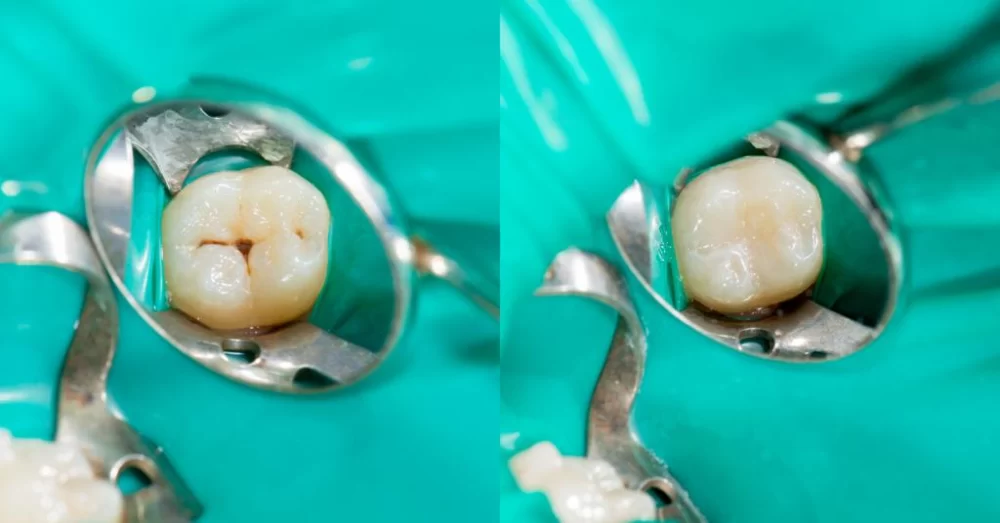
Understanding the Different Types of Tooth Fillings and Their Benefits
- 1. Types of Tooth Fillings
- 2. Composite Fillings
- 3. Amalgam Fillings
- 4. Resin Fillings
- 5. Choosing the Right Filling for Your Teeth
When I first visited my dentist years ago for a routine checkup, I had no idea that I’d end up needing a filling. At the time, the idea of a filling sounded pretty straightforward: a dentist simply plugs up the cavity in your tooth and you’re good to go. But as I got deeper into dental care, I learned that there are actually different types of tooth fillings, each with its own benefits and drawbacks. Today, I’ll walk you through the most common types of dental fillings, share what I’ve learned, and explain how they can impact your smile and oral health in the long run.
1. Types of Tooth Fillings
Tooth fillings are used to restore the function and shape of a tooth after it has been affected by decay. Cavities, caused by bacteria that eat away at the tooth enamel, often require fillings to prevent further damage. There are various materials available for filling cavities, including composite fillings, amalgam fillings, and resin fillings. Each material offers a different set of benefits depending on your needs, budget, and the location of the cavity in your mouth.
As I started to explore my options, I realized that not all fillings are created equal. Some are designed to be highly durable, while others are more aesthetically pleasing. Some fillings are better for large cavities, while others work better in smaller, more intricate spaces. Over time, I came to appreciate that understanding the differences between these types of fillings is crucial when making a decision about your dental health.
2. Composite Fillings
Composite fillings have quickly become one of the most popular choices for people who want a natural-looking restoration. These fillings are made from a resin material that can be easily molded to fit the shape of your tooth. As someone who values the appearance of my smile, I found that composite fillings blend seamlessly with the natural color of my teeth, making them a great choice for cavities in the front teeth where aesthetics are a priority.
Composite fillings have the advantage of being less noticeable than their metal counterparts, like amalgam fillings. They also bond directly to the tooth structure, providing added strength and support. This makes them a great option if you’re concerned about tooth strength after a filling. One downside I’ve encountered, though, is that composite fillings can be more prone to wear and tear, especially if you’re dealing with a larger cavity or if the filling is placed in a location where it will experience a lot of pressure, like the back molars.
In my experience, composite fillings are ideal for people who want a discreet restoration that looks and feels like a natural tooth. However, if you’re dealing with a particularly large cavity or need a filling that will last longer, you may want to explore other options as well.
3. Amalgam Fillings
Amalgam fillings are one of the oldest and most well-known types of dental fillings. Made from a mixture of metals, including silver, mercury, and tin, these fillings have been used for over 150 years to restore teeth. While amalgam fillings are highly durable and long-lasting, they have fallen out of favor with some patients due to their noticeable metallic appearance.
For years, I avoided amalgam fillings for aesthetic reasons. I didn’t want a shiny silver filling visible in my smile, especially on my front teeth. However, I later realized that amalgam fillings can be a great choice for filling cavities in the back molars, where they are less noticeable and highly effective. These fillings are also highly durable, which makes them ideal for large cavities that need extra strength.
One of the biggest advantages of amalgam fillings is their affordability. They are typically less expensive than composite fillings, making them an attractive option for those on a budget. While I appreciate the affordability and durability of amalgam fillings, the metal appearance is something to consider if you care about the cosmetic aspect of your smile.
4. Resin Fillings
Resin fillings, also known as glass ionomer fillings, are another option that I’ve come across during my research into dental restorations. These fillings are made from a combination of acrylic and glass materials, and they offer several benefits. Resin fillings are often used for cavities in areas of the mouth that don’t experience a lot of pressure, such as near the gum line or in small cavities in the front teeth.
One of the benefits of resin fillings is their ability to release fluoride, which can help protect the surrounding tooth structure from further decay. I’ve found that resin fillings can be particularly useful for people who are at a higher risk of developing cavities, as the fluoride release can act as a preventive measure. However, resin fillings are generally not as durable or long-lasting as composite or amalgam fillings, which makes them less suitable for larger cavities.
Resin fillings are also more affordable than composite fillings, which makes them an attractive option for people who want a cost-effective solution for filling small cavities. However, the longevity of resin fillings is something to consider if you’re looking for a long-term restoration option.
5. Choosing the Right Filling for Your Teeth
Choosing the right type of filling depends on several factors, including the size and location of your cavity, your personal preferences, and your budget. Based on my experience, I’ve found that composite fillings are an excellent option if you’re looking for a discreet, natural-looking restoration. However, if you’re dealing with a large cavity that needs extra strength, amalgam fillings may be a better choice.
For smaller cavities or cavities near the gum line, resin fillings can be a great budget-friendly option that also offers the added benefit of fluoride release. When making your decision, it’s important to discuss your options with your dentist and weigh the pros and cons of each material.
If you’re unsure about which type of filling is right for you, I highly recommend scheduling a consultation with a dental professional who can evaluate your specific needs and guide you through the process. You can learn more about the different types of fillings and get personalized recommendations by visiting Dentistry Toothtruth.







 Hutchinson Metro Dental4.0 (2685 review)
Hutchinson Metro Dental4.0 (2685 review) Emerson Family Dental5.0 (273 review)
Emerson Family Dental5.0 (273 review) Mundelein Dental Center3.0 (8 review)
Mundelein Dental Center3.0 (8 review) Sunnyvale Pediatric Dentistry and Orthodontics4.0 (365 review)
Sunnyvale Pediatric Dentistry and Orthodontics4.0 (365 review) Great Smiles Dental Care4.0 (472 review)
Great Smiles Dental Care4.0 (472 review) Larchmont Family Dental5.0 (532 review)
Larchmont Family Dental5.0 (532 review) The Importance of Oral Health Education During Pregnancy for a Healthy Pregnancy
The Importance of Oral Health Education During Pregnancy for a Healthy Pregnancy Best Tips for Brushing Your Teeth Properly for Healthy Gums: Essential Techniques for Oral Health
Best Tips for Brushing Your Teeth Properly for Healthy Gums: Essential Techniques for Oral Health Why Skipping Dental Checkups Can Lead to Bigger Oral Health Problems
Why Skipping Dental Checkups Can Lead to Bigger Oral Health Problems Advantages of Porcelain Dental Restorations
Advantages of Porcelain Dental Restorations How Can Diabetes Cause Tooth and Gum Problems? Preventing and Managing Oral Health Issues
How Can Diabetes Cause Tooth and Gum Problems? Preventing and Managing Oral Health Issues Healthy Habits for Promoting Good Oral Health and Hygiene: Tips for a Healthy Smile
Healthy Habits for Promoting Good Oral Health and Hygiene: Tips for a Healthy Smile